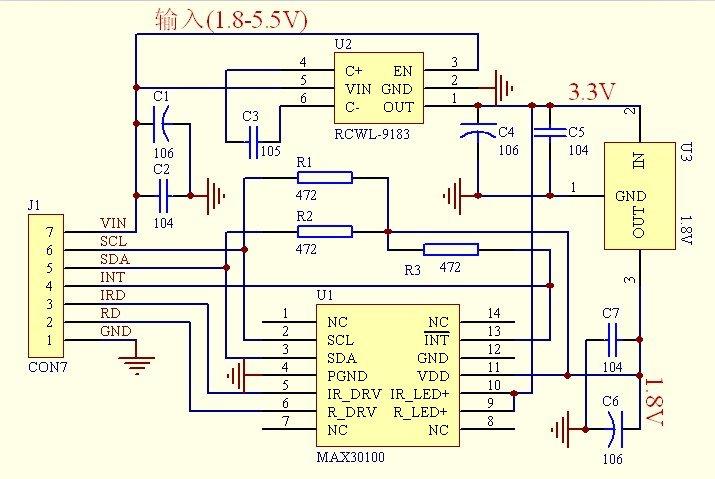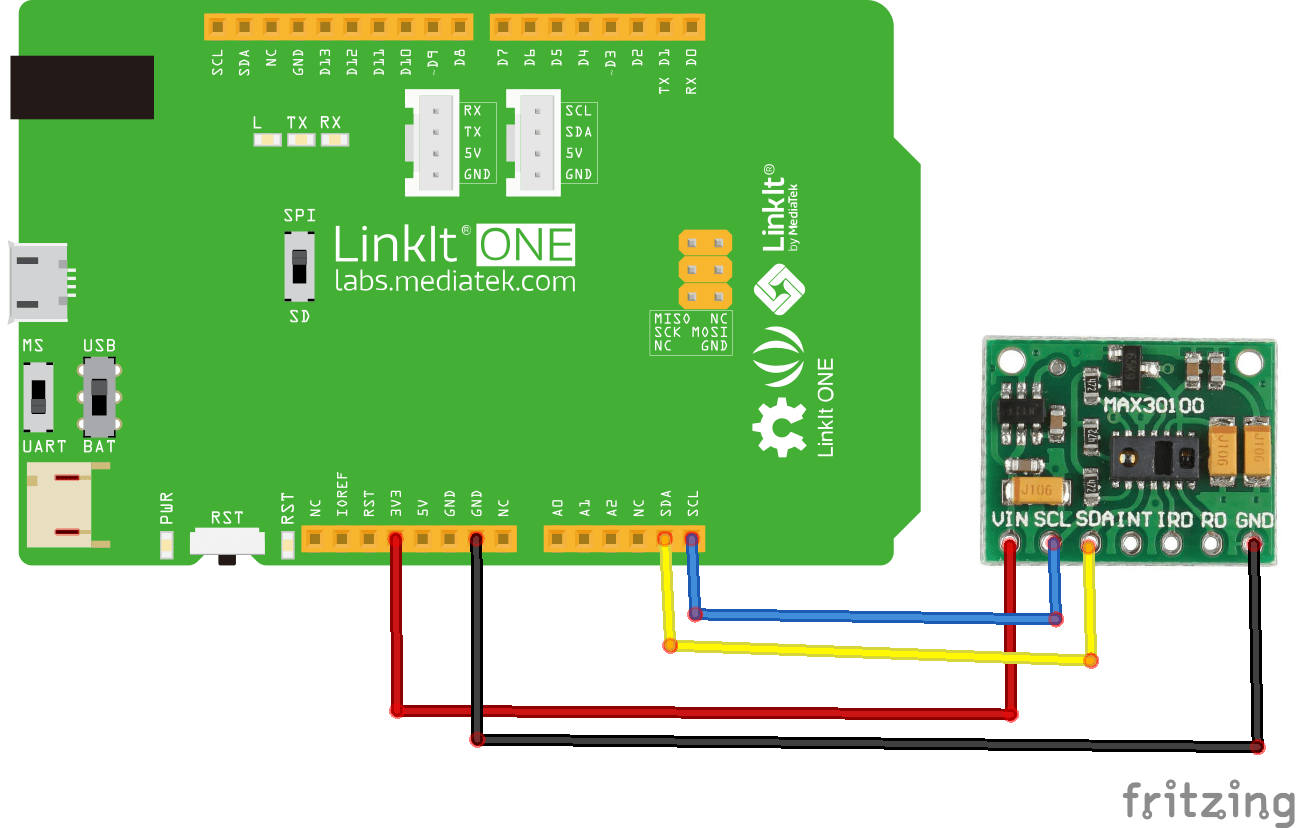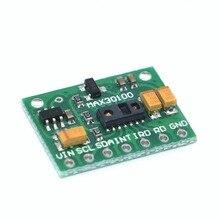The MAX30100 is an integrated pulse oximetry and heart-rate monitor sensor solution. It combines two LEDs, a photodetector, optimized optics, and low-noise analog signal processing to detect pulse oximetry and heart-rate signals.
The MAX30100 operates from 1.8V and 3.3V power supplies and can be powered down through software with negligible standby current, permitting the power supply to remain connected at all times.
Key Features
- Complete Pulse Oximeter and Heart-Rate Sensor Solution Simplifies Design
- Integrated LEDs, Photo Sensor, and High-Performance Analog Front-End
- Tiny 5.6mm x 2.8mm x 1.2mm 14-Pin Optically Enhanced System-in-Package
- Ultra-Low-Power Operation Increases Battery Life for Wearable Devices
- Programmable Sample Rate and LED Current for Power Savings
- Ultra-Low Shutdown Current (0.7µA, typ)
- Advanced Functionality Improves Measurement Performance
- High SNR Provides Robust Motion Artifact Resilience
- Integrated Ambient Light Cancellation
- High Sample Rate Capability
- Fast Data Output Capability

Connection

Code
You will need the library from https://github.com/oxullo/Arduino-MAX30100 and import it into the Arduino IDE
[codesyntax lang=”cpp”]
#include <Wire.h>
#include "MAX30100_PulseOximeter.h"
#define REPORTING_PERIOD_MS 1000
// PulseOximeter is the higher level interface to the sensor
// it offers:
// * beat detection reporting
// * heart rate calculation
// * SpO2 (oxidation level) calculation
PulseOximeter pox;
uint32_t tsLastReport = 0;
// Callback (registered below) fired when a pulse is detected
void onBeatDetected()
{
Serial.println("Beat!");
}
void setup()
{
Serial.begin(115200);
Serial.print("Initializing pulse oximeter..");
// Initialize the PulseOximeter instance
// Failures are generally due to an improper I2C wiring, missing power supply
// or wrong target chip
if (!pox.begin()) {
Serial.println("FAILED");
for(;;);
} else {
Serial.println("SUCCESS");
}
// The default current for the IR LED is 50mA and it could be changed
// by uncommenting the following line. Check MAX30100_Registers.h for all the
// available options.
// pox.setIRLedCurrent(MAX30100_LED_CURR_7_6MA);
// Register a callback for the beat detection
pox.setOnBeatDetectedCallback(onBeatDetected);
}
void loop()
{
// Make sure to call update as fast as possible
pox.update();
// Asynchronously dump heart rate and oxidation levels to the serial
// For both, a value of 0 means "invalid"
if (millis() - tsLastReport > REPORTING_PERIOD_MS) {
Serial.print("Heart rate:");
Serial.print(pox.getHeartRate());
Serial.print("bpm / SpO2:");
Serial.print(pox.getSpO2());
Serial.println("%");
tsLastReport = millis();
}
}
[/codesyntax]
Output
Open the serial monitor
Beat!
Heart rate:15.04bpm / SpO2:0%
Beat!
Heart rate:24.94bpm / SpO2:0%
Beat!
Heart rate:42.41bpm / SpO2:96%
Beat!
Heart rate:59.34bpm / SpO2:96%
Beat!
Beat!
Heart rate:75.93bpm / SpO2:97%
Beat!
Heart rate:79.95bpm / SpO2:97%
Beat!
Heart rate:82.62bpm / SpO2:97%
Beat!
Heart rate:81.42bpm / SpO2:94%
Beat!
Heart rate:53.35bpm / SpO2:94%
Heart rate:53.35bpm / SpO2:94%
Links
Heart Rate Click MAX30100 modules Sensor for Arduino

